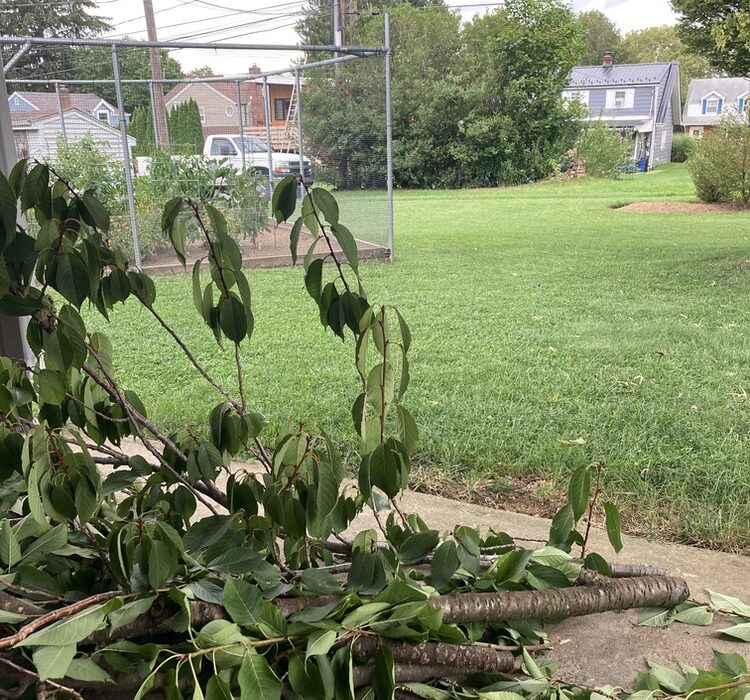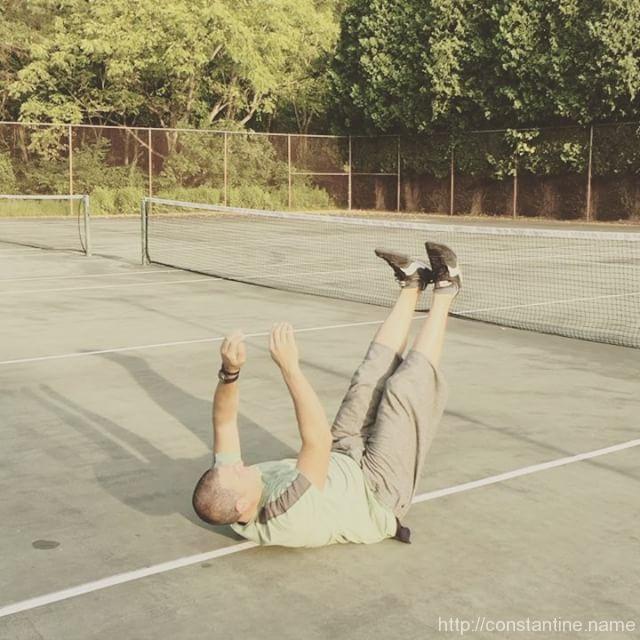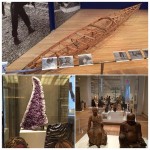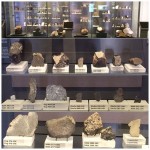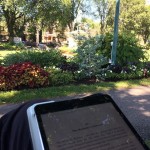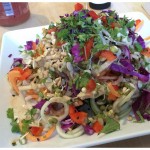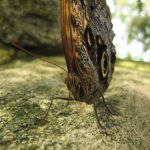“As a 6th kyu, I have spent very little time, and have very little skill at sensing the timing of a coming attack. Though my teacher has worked on this with us, I find I am slow at learning to ‘read’ my attacker, and rely on knowing what is coming and the very slow attacks of training. Have you any specific techniques for this?”
~ name withheld
I do have specific things you can practice. But first, I’m going to wander very far afield…
An aside for those not well-versed on Aikido: ‘6th kyu’ is the first rank one reaches in Aikido. “A minimum of 40 hours” of practice time is commonly seen as a baseline requirement in the various styles of Aikido. A 6th kyu student is definitely a beginner, but also definitely someone dedicated enough to have stuck with their training through their first real test.
Martial arts are mentally and physically difficult. Everyone is their own worst critic. When students express frustration with something, (a technique, a principle, etc) I often say, “that is why it is called ‘practice’.” My best advice is to simply practice. I assert that such advice is not trite!
“If you want to go east, go east. If you want to go west, go west.”
This is a handed-down quote which Sensei Wirth attributes to Sensei Koichi Tohei. It is clearly echoed in one of Sensei Wirth’s phrases, immortalized on some of our t-shirts years ago: “No this. No that. No delay.” So whatever is being practiced, do that thing, the whole thing, and nothing but the thing. Do not entertain some mental storyline about how, “this is a great opportunity to work on sensing,” nor “this is particularly hard so I need to pay special attention here.”
Simply practice
Physically, do only what must be done. Do not flail, twitch, wind-up in preparation, shuffle before starting, speak, nor any other of countless things. Practice being physically calm; Act calm until you are calm. Simply move. Move simply. Go east. Go west. Practice this physical aspect always and everywhere.
Mentally do only what must be done. Don’t have a running mental commentary. Do not think, “I did that one wrong”, “I did that one better”, “that one was horrible”, “my partner does this so much better than I”, nor any other of countless thoughts. Observe your thoughts, but do not add one iota of energy to them. Thinking, “I am thinking useless thoughts”, is a useless thought! If you were handed a large bucket of sloshing and disturbed water and told to calm the water, you should simply set the bucket down and wait for the water to calm. You would definitely NOT shake the bucket in an attempt to convince the water to calm down. You cannot think your way to sensing an attack; You can only NOT think, whereupon you will discover your senses work rather well.
Further reading
Here are several other sources of information which I think are apropos…
O’Sensei mentions a ‘mountain echo’ in at least one place. The best source I see is AikiNews (AN), later known as Aikido Journal. Refer to issue 46 from March 1982 wherein Seiseki Abe Sensei — who was O’Sensei’s caligraphy instructor in addition to being an Aikido student — granted permission, under the supervision of then-doshu Kisshomaru Ueshiba, for AN to publish a selection of O’Sensei’s ‘Doka’. (Alternatively, ‘Poems’. But ‘poem’ is not a perfect word to describe what O’Sensei was writing, so you’ll need to read the entire AN article to get more context.)
The article contains these two doka among many others:
(#48)
Blend with ki-musubi the
Universe of Heaven and Earth (tenchi)
Stand in the center (of all)
In your heart take up the stance
Of “The Way of the Mountain Echo”
(#68)
The cold expanse (samuhara) of the Great Vast Sea
Which is foaming in the world of kotodama
Is “the Way of the Mountain Echo”.
I am by no means qualified to analyze O’Sensei’s writings. I only present these two particular doka so as not to pull “the Way of the Mountain Echo” completely out of context from O’Sensei original writing. You will need to pick up AN #46 to learn more; There is much more in the article than the little bit I’m presenting here. Abe Sensei provided a number of explanatory footnotes for the doka. Here is the footnote for “the Way of the Mountain Echo”. Bear in mind that “today”, although it’s not completely clear, is certainly no later than circa 1982.
“This is a difficult image to define clearly, especially since it is rarely used today by the present teachers of Aikido. A mountain echo repeats back to the caller the same thing that was originally shouted. In O’Sensei’s “Way of the Mountain Echo” the images seem to be something akin to the concept of Aiki, in the sense of responding to or adapting to whatever it may be that your partner delivers and dealing with each encounter as if it were a completely new and fresh event. Associated with this may be the image of the emptiness of the echo before anyone calls out to it, the fact that an echo makes no distinction between two different callers and recognizes no differences in languages, or content of the message. It may also involve the idea of the purposefulness of the echo’s calling back although it never fails to do so whenever called upon and to do so with all its effort. Another possible interpretation or nuance could be the fact that the echo’s answering call always brings pleasure to the caller.”
~Seiseki Abe Sensei, from AN #46 March 1982, footnotes to selections of O’Sensei’s Doka
Next I would like to draw your attention to an article published more recently on the Aikido Journal (AJ) web site. The article is, I believe, publicly accessible. (However, any serious Aikido student should join AJ as a supporting member.) You should read the whole article. The sections “Beyond ‘Sensen no Sen'”, “Up, Down, To and Fro” and “Leading and Directing” are apropos, and this paragraph introducing ‘Takemusu Aiki’ is particularly poignant:
“This is a high-level ideal that is attainable only through long years of training to develop a heightened sensitivity to people and happenings in one’s surroundings. It further involves developing a set of spontaneous skills consisting of physio-psychological responses suited to any conceivable kind of human interaction. The Founder described this state as ‘Takemusu Aiki’ — the highest level of aikido where one is capable of spontaneously executing perfect techniques in response to any circumstance.”
~ Stanley Pranin, Aikido Journal web site
The article is Exploring the Founder’s Aikido by Stanley Pranin.
Another article I recommend is simply titled “Irimi.” It too is posted on the AJ web site, but is written by Ellis Amdur, (who is not directly related to AJ.) There’s so much in this article that is apropos, I couldn’t select a reasonable amount to quote, so go there and read the entire thing.
This second article is Irimi by Ellis Amdur.
Having wandered very far afield, I’ll now circle back to some nuts-and-bolts things you can practice. Only the most die-hard of Aikido students will still be reading at this point. The first two suggestions below are internal/mental things to do and the later two are external/physical things to do.
Things to practice
1) work on not “missing frames” of the movie.
If what you see of uke were actually a movie, would you be seeing all the frames of the movie? Does is seem, in hindsight, that they teleported from their starting position to somewhere mid-attack? Repeat the practice and pay attention to when (which frame?) you first notice they have attacked. Continue practicing, focusing your senses on noticing the gap in your observations. The gap will necessarily grow smaller the more you practice this.
2) stay “pressed against the glass”
A metaphor I probably lean on too often. Consider driving in a car at a break-neck speed. Don’t lean back in your seat cowering in fear of whatever it is you’re going to encounter. (And which, at break-neck speed you could not hope to avoid and would therefore crash into.) LEAN FORWARD. Press your face against the windshield as if somehow getting a few feet closer to the oncoming destruction would somehow buy you enough time to avert the collision. This is a metaphor! Don’t physically lean perilously forward. Move your attention and your curiosity forward. Strain to reach forward with your senses.
3) practice entering into a swinging-jo-staff
Have uke hold a staff by the very end and swing it menacingly through a full range of arc; so the staff goes from behind on the right, around the front to behind on the left. You should have a good “whoosh whoosh” going on with the swing. If you get hit with the end of the stick, you’ll need smelling salts or a cast. Stand safely outside the staff’s swinging range and move as close as is possible remaining perfectly safe. “whoosh whoosh whoosh”. When the time is right, move briskly right up to uke without getting whacked.
4) practice atemi
The atemi should be the “affect uke’s attention and balance” variety, not the “crush uke and end the interaction” variety. Begin by finding (no small task, ask your Sensei) the atemi options for whatever uke is doing. Then work on noticing — actually thinking, atemi there, atemi there, atemi over there — several (all?) of the possibilities in each attack. Then practice actually implementing one or two (or more!) of the atemis.
ɕ

